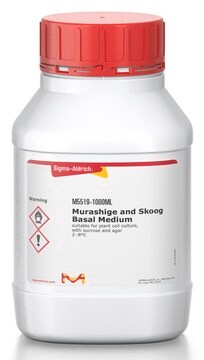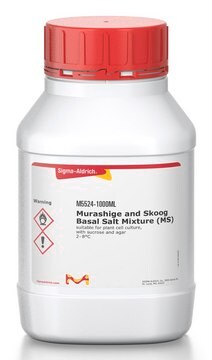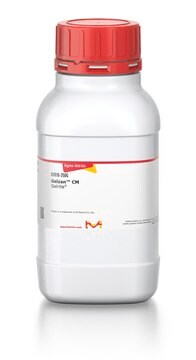A7921
Agar
suitable for plant cell culture, powder
Sinónimos:
Agar goma, Agar-agar
About This Item
Productos recomendados
biological source
algae (Rhodophyceae)
form
powder
technique(s)
cell culture | plant: suitable
transition temp
congealing temperature 30-35 °C
application(s)
agriculture
storage temp.
room temp
SMILES string
O1[C@@H]([C@@H]([C@@H]([C@H](C1OC2[C@H]3OCC2OC([C@H]3O)C)O)OC)O)CO
InChI
1S/C14H24O9/c1-5-8(16)13-11(7(21-5)4-20-13)23-14-10(18)12(19-2)9(17)6(3-15)22-14/h5-18H,3-4H2,1-2H3/t5?,6-,7?,8-,9+,10-,11?,12+,13+,14?/m1/s1
InChI key
GYYDPBCUIJTIBM-DYOGSRDZSA-N
¿Está buscando productos similares? Visita Guía de comparación de productos
General description
Application
- of Gamborg′s B5 regeneration medium
- of Murashige and skoog (MS) medium for the germination of Hypericum triquetrifolium Turra seeds
- in shoot inducing and naphthalene acetic acid pretreatment medium for the regeneration of Arabidopsis thaliana seedlings
Biochem/physiol Actions
Other Notes
Preparation Note
Storage Class
11 - Combustible Solids
wgk_germany
WGK 1
ppe
Eyeshields, Gloves, type N95 (US)
Elija entre una de las versiones más recientes:
¿Ya tiene este producto?
Encuentre la documentación para los productos que ha comprado recientemente en la Biblioteca de documentos.
Los clientes también vieron
Nuestro equipo de científicos tiene experiencia en todas las áreas de investigación: Ciencias de la vida, Ciencia de los materiales, Síntesis química, Cromatografía, Analítica y muchas otras.
Póngase en contacto con el Servicio técnico



